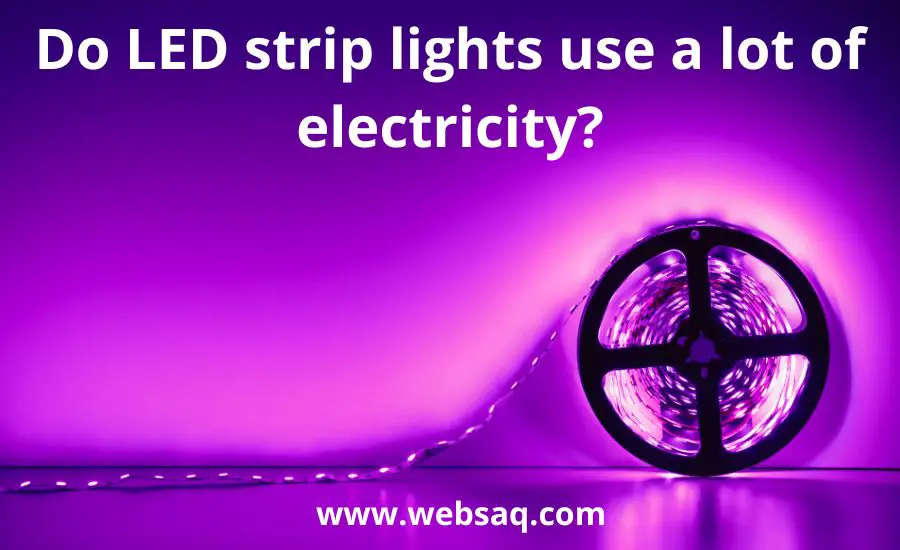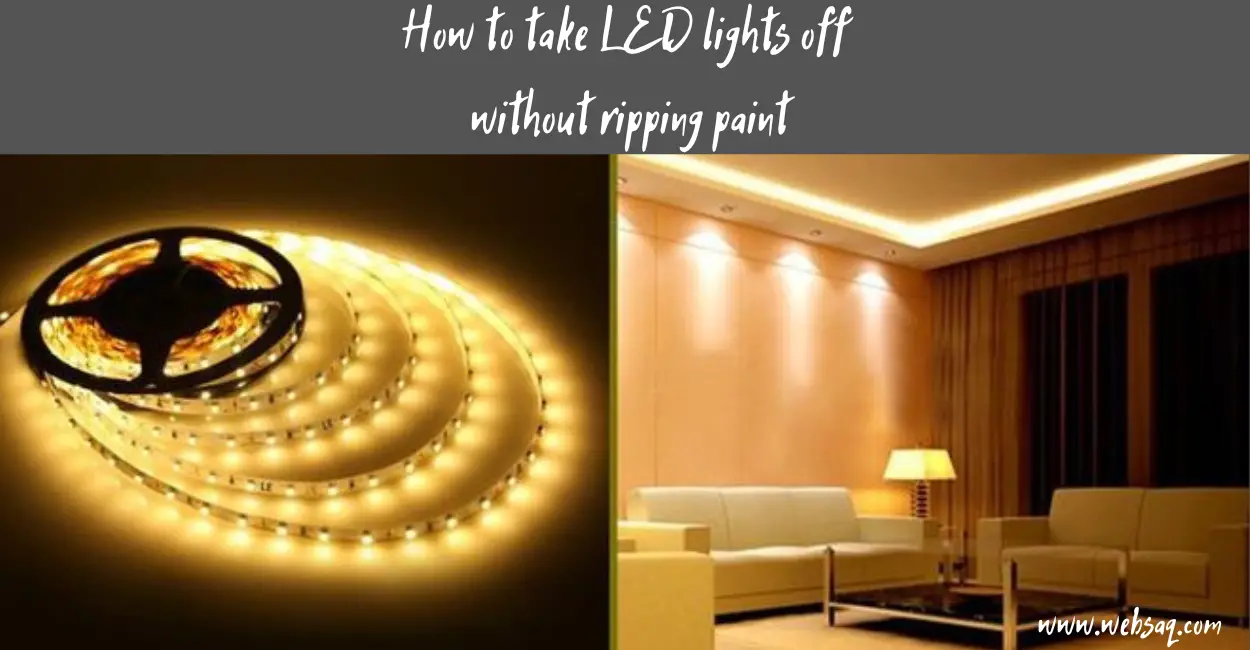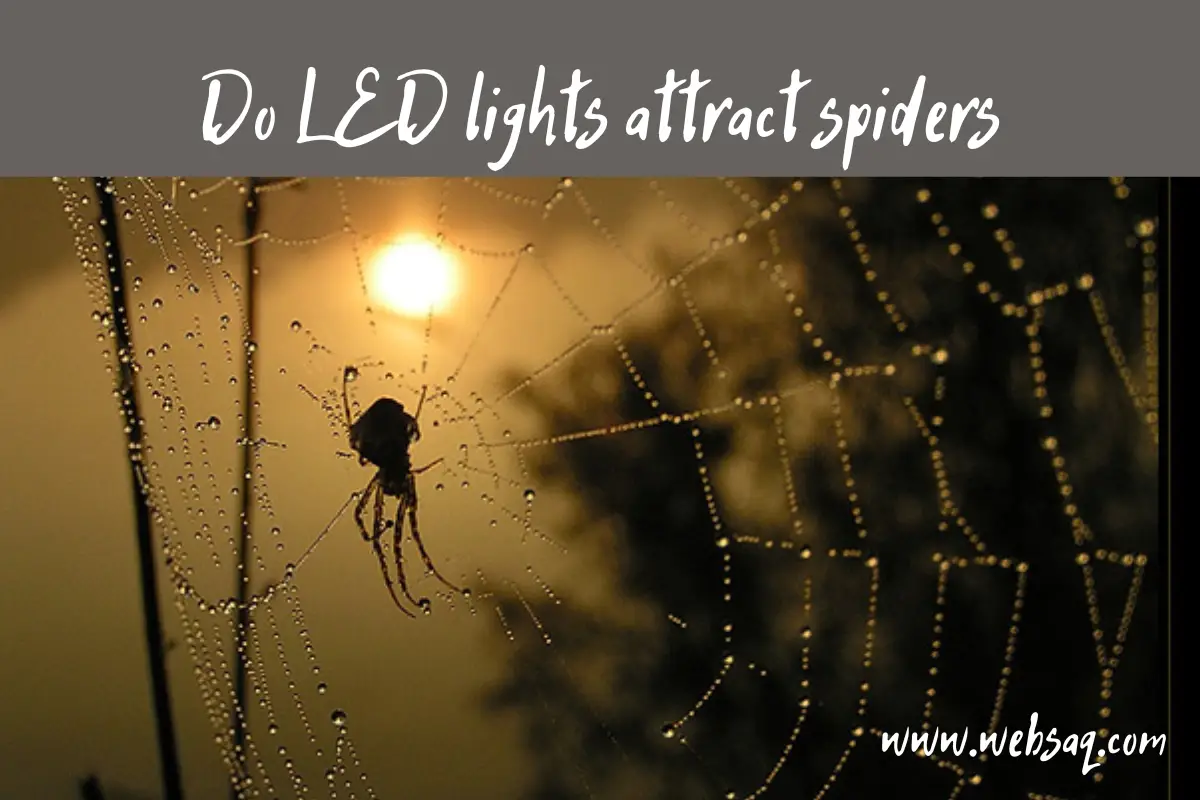LED strip lights have become a top lighting option, capturing the imaginations of homeowners, decorators, and designers all over the world in an era where energy efficiency and environmental awareness are crucial.
Lighting admirers have long been concerned about electricity use, especially with the emergence of energy-efficient alternatives to conventional incandescent lights.
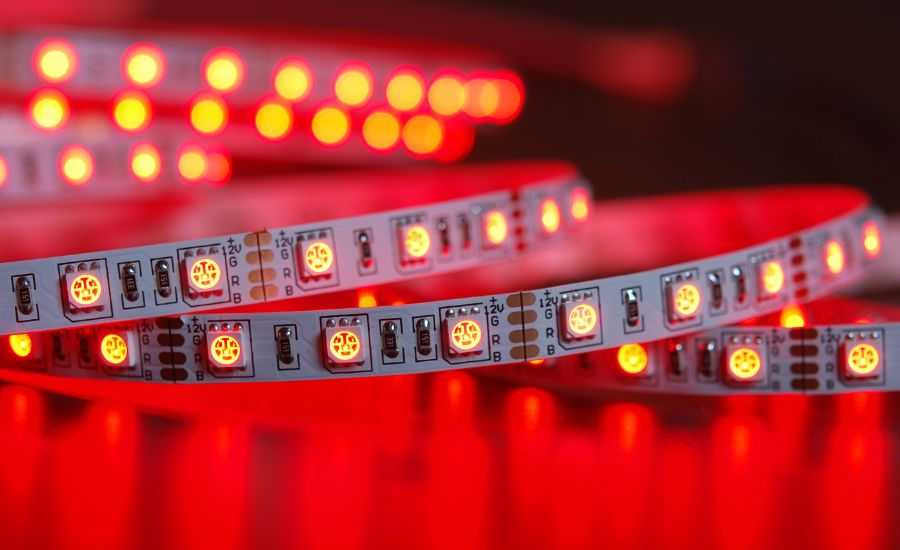
Although LED technology has completely changed the lighting business and has many advantages over incandescent light bulbs its forerunners, it is only natural to wonder how much energy LED strip lighting requires.
We will delve into the world of LED lighting in this article to get the truth about how much energy LED strip light use.
Lead strip lights: overview
The power of LED technology is at the core of lead strip lights. The term light-emitting diode, or simply “LED,” refers to a semiconductor device that produces light when an electric current flows through it.
This technology has revolutionized the way we light up our homes, workplaces, and public spaces.
LED light bulbs offer several benefits over traditional incandescent bulbs and incandescent illumination. Electric current is passed through a filament in a more conventional incandescent lighting bulb to create light.
But because so much heat is produced during this process, energy is wasted.
LED lighting, in contrast, uses light-emitting diodes, which generate very little heat.
Traditional incandescent lights are notoriously inefficient because they squander a lot of electricity as heat instead of turning it into light.
Using LED strip lights is a useful and effective approach. LED strip lights use a great deal less energy while providing the best brightness and illumination by utilizing LED bulb technology.
Compared to traditional incandescent bulbs, LED, and light strip bulbs offer a longer lifespan, which lowers the frequency of replacements and associated costs.
A LED strip light provides advantages beyond just being more energy-efficient. Their adaptability enables their employment in a variety of contexts, from highlighting architectural details to injecting some creativity into interior design.

Features of an LED strip light
The variety of capabilities that LED bulbs provide, makes them a popular option for both domestic and industrial lighting applications.
Easy installation: Installation is made simple by the design of an LED light bulb. They frequently include a self-adhesive backing, which makes it easy to stick them to various surfaces like furniture, walls, or ceilings.
Some LED strips also include connectors, making it possible to easily customize or extend their length without the need for intricate cabling.
Energy efficient: A higher percentage of electrical energy is converted into visible light by an LED light bulb and strip lights, making them extremely energy-efficient.
They use a lot lower power consumption and less electricity than conventional lighting fixtures like incandescent lights.
Long lifespan: The longevity of an LED bulb is outstanding. Depending on the quality and usage, they can often last 30,000–50,000+ hours or even more. This lifespan beats conventional lighting solutions, lowering the frequency of maintenance and replacement.
Fewer replacements, lower maintenance expenses, and less waste are the results of this increased longevity.
Versatility: LED bulbs give flexibility in lighting design because they are available in a range of lengths, hues, and types. Warm white and cold white are the two single-color alternatives that are offered.
Dimmability: The brightness levels of many LED strip lights can be adjusted by users by their preferences or lighting needs. This feature gives you more freedom in setting the ideal mood or atmosphere.
Power consumption: LED strip lights are a great option for long-term use because of their low power consumption.
They don’t use a lot of energy or contribute significantly to rising electricity prices when left on for long periods.
Low heat emission: Compared to conventional lighting sources and fluorescent bulbs, LED strip lights produce very little heat. This is so that energy is converted more effectively into light by LEDs as opposed to heat.
Durability: LED strip lights are made to last and to be resistant to vibration, shock, and temperature changes. They are excellent for a variety of indoor and outdoor applications because they are less likely to break and sustain damage.
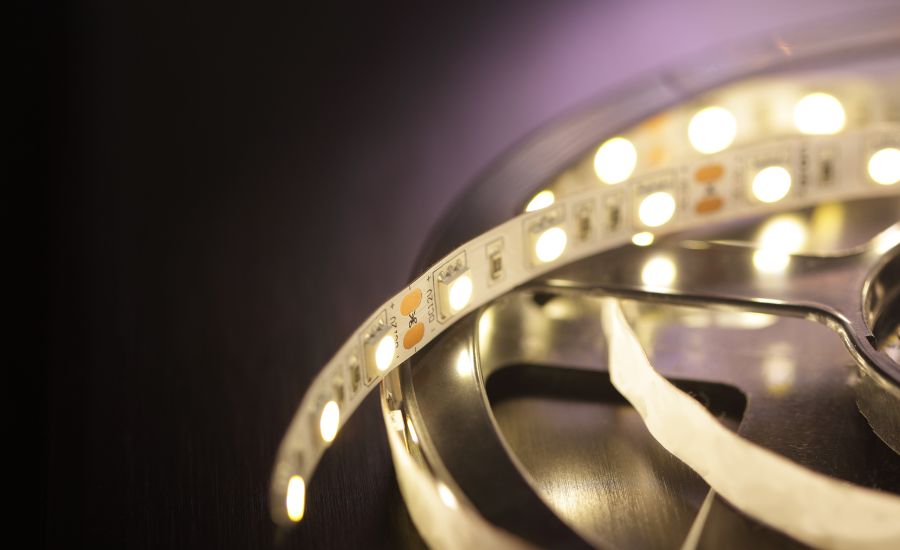
Drawbacks of LED lights
Heat sensitivity: LED strip lights can be heat-sensitive, especially when the strip light is utilized in hot climates or close to heat sources.
Color rendering: Although most LED strip light lights come in a variety of colors, some less expensive models might not render colors accurately.
Flickering: Sometimes, particularly when connected to incompatible dimmers or power supplies, lower-quality, LED bulbs, and a strip light may show flickering or buzzing.
Price: Compared to more conventional lighting solutions like incandescent bulbs or fluorescent tubes, LED strip lights typically have a greater upfront cost.
Environmental disposal: Although LED lighting is more ecologically friendly than conventional lighting solutions, they still have electronic parts that must be disposed of properly when their useful lives are through.
Installation: Although LED strip lights are often simple to install, more intricate installations or custom setups could call for more skill or understanding.
For instance, soldering or the use of specific connectors may be required for cutting and reconnecting LED light strips together.
Voltage fluctuations: When the power supply is unstable or when using mismatched power sources or a bad power supply, LED strip lights might be sensitive to voltage changes.
To sustain peak performance, it’s critical to use a quality power supply and make sure the electrical environment is steady.

Traditional lighting: overview
Using standard technologies like incandescent bulbs, fluorescent bulbs, and halogen lights, traditional lighting refers to lighting techniques and fixtures that have been in use for decades.
The incandescent bulb is one of the most recognizable types of traditional lighting. Thomas Edison invented these bulbs, which function by passing an electric current via a heated filament, which subsequently produces light.
Fluorescent lighting is a common choice for large areas like offices, warehouses, and factories due to its high-lumen output and efficient performance.
Fluorescent tubes are filled with mercury vapor, which when electrified emits ultraviolet light.

Drawbacks of traditional lighting
Power consumption: Traditional lighting methods, such as incandescent bulbs and fluorescent tubes, are known for their relatively high power consumption.
These technologies convert a significant portion of electrical energy into heat rather than light, resulting in inefficiency and power consumption.
This inefficiency contributes to how much electricity will be used, higher power consumption, and increased environmental impact in terms of carbon emissions.
Lifespan: Compared to more recent alternatives, traditional lighting solutions typically have a shorter lifespan. For instance, incandescent bulbs typically last between 1,000 and 2,000 hours.
Slow start time: Before achieving maximum brightness, some conventional lighting systems, such as fluorescent tubes, may need to warm up.
In places like hallways, toilets, or commercial settings where quick illumination is preferred, this delayed start-up period may be an inconvenience.

LED stripe light vs. traditional light
Energy efficiency: LED strips outperform traditional lights by a wide margin. Reduced power use and cheaper electricity costs result from this. In contrast, conventional lights, especially incandescent bulbs, are infamous for their energy inefficiency since they waste a lot of energy by producing a lot of heat.
Lifespan: When compared to conventional lights, LED strips offer an exceptional lifespan. Depending on the quality of the LEDs and the conditions of use, they can endure for tens of thousands of hours.
Traditional lights like incandescent bulbs and fluorescent tubes normally need to be replaced frequently, yet this lifetime outlasts them.
Power consumption: Conventional incandescent bulbs generally have a bad reputation for consuming a lot of power, whereas LED bulbs and strip lights don’t have a filament that heats up to produce light as incandescent bulbs do.
Conventional lighting fixtures need a lot of electricity to generate the appropriate amount of light.
Installation: LED light strips are quite simple to install and don’t need any upkeep. They frequently include adhesive backing or mounting clips, making it simple to attach them to a variety of surfaces. Depending on the kind, installing traditional lights may need more complicated steps involving wiring and fixtures.
Brightness: A variety of brightness and color options provided by LED light strips enable flexible lighting solutions. They can be dimmable and provide fine control over illumination settings, giving you the freedom to establish various ambiances and moods.
Traditional lighting, on the other hand, could have fewer brightness settings and a smaller selection of color temperatures.
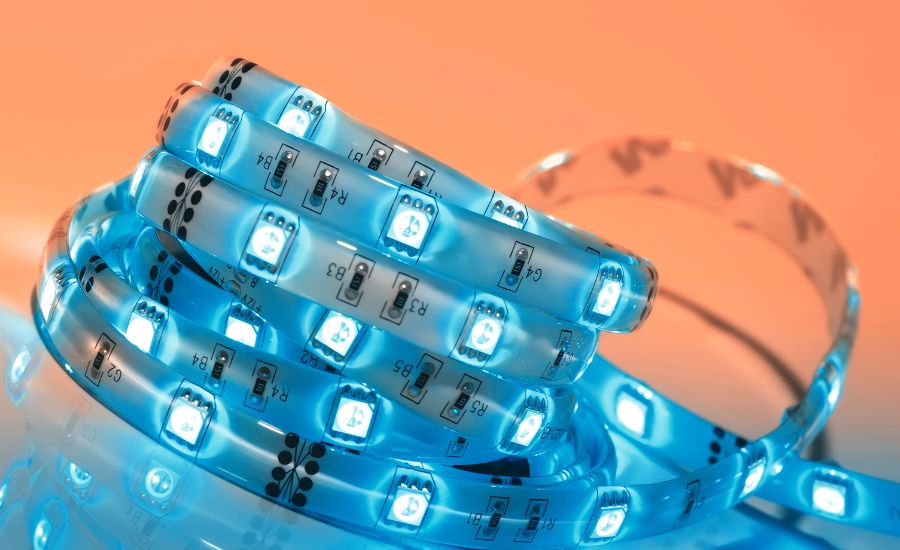
LED light’s electricity usage
To calculate how much LED strip lights cost, first gather the necessary information, including the LED Light wattage, the operating hours, and the electricity cost in your location.
While the wattage of LED lights is commonly given in watts, electricity use is measured in kilowatt-hours (kWh). Divide the wattage of the strip light by 1,000 to convert it to kilowatts.
The kilowatt value of the strip light should be multiplied by the number of hours it is on each day.
By dividing the daily electricity consumption by the number of days in a month, you can calculate the monthly electricity consumption of your light strip.
Add the monthly electricity consumption to the price per kilowatt-hour to get the cost of electricity.
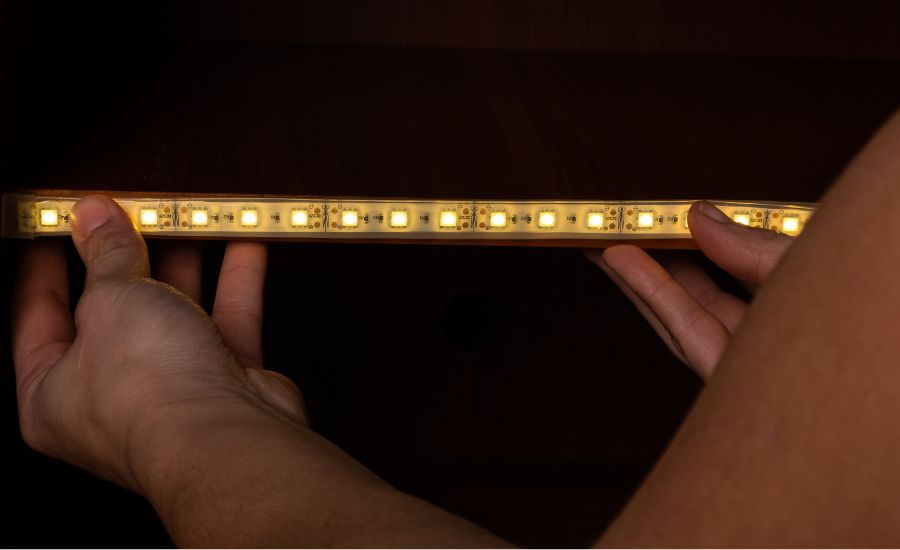
FAQ
LED lights are known to use less electricity than traditional alternatives like incandescent and fluorescent light bulbs.
Not at all, LED lights are generally known for their low cost and longevity.
The expenses of an LED light depend on the wattage of the light and the electricity rate in your location, the procedure for calculating an accurate value is explained above.
A light strip electricity usage is relatively low, the exact amount depends on several factors like the length and the wattage per meter and how long you leave LED strip lights on.
Conclusion
In conclusion, A LED strip light is a great option for illumination that uses less energy. They have lengthy lifespans, use far less electricity than conventional lighting alternatives, and give the possibility to adjust brightness and create unique lighting effects.
You may enjoy stunning and adaptable illumination as well as lower your energy costs and help create a more sustainable future by deciding to switch to LED strip lights.

Here, I provide valuable insights into the lighting industry, drawing from 12 years of experience. My aim is to share useful and practical tips, life hacks, and comprehensive product reviews. I hope that collective expertise, advice, and recommendations prove beneficial to you.

